Kerbal Space Program 2 is a hotly anticipated sequel to one of the most beloved and adorably explosive space program simulators ever made. It’s building on the stellar legacy of its green-skinned predecessors, with improved visuals and efficiencies, a grander universe to explore, and ever more powerful rockets to build to take us there.
The visual upgrades will be particularly welcome, but anyone looking to run this game on an old PC should pause to reconsider, as this game is not easy to run.
Part of that is the big upgrade to the game’s look, with vastly more detailed planet surfaces, more impressive plume effects, and lots of additional visual details on Kerbin itself, including denser trees and foliage around the launch site. The other part comes from the game’s Early Access status and its ongoing need for additional optimization.
With that in mind, we’ve put together some systems that we think would be great for playing Kerbal Space Program 2, and compared them with the published system requirements to see how they might measure up.
A Caveat From The Developers
There has been a lot of discussion about Kerbal Space Program 2 and its system requirements in recent weeks, with some saying they’re too high, and others too low. With complaints about poor optimization in the game, developer Intercept Games has published a few statements on the matter.
Alongside the details on what efficiency improvements are being made to the existing game, and what kind of performance enhancements can be expected in the near future, Intercept also broke down why it made the suggested system requirements it did.
While the specifics of that discussion go beyond the scope of this article, Kerbal Space Program 2 is a big game that can be played in all kinds of ways. You can likely play this game below the minimum specifications if you only build small spaceships and don’t run massive fleets at a time.
If you install a bunch of mods and build gigantic spaceships, then you’re going to need something more powerful than the recommended requirements just to get the game running comfortably.
As this game is in Early Access, expect the system requirements to change over time, and your own playstyle will have just as great an effect as any future improvements. While that will affect the recommendations we make here, know that they will remain grounded and effective suggestions throughout the lifespan of the current component generations.
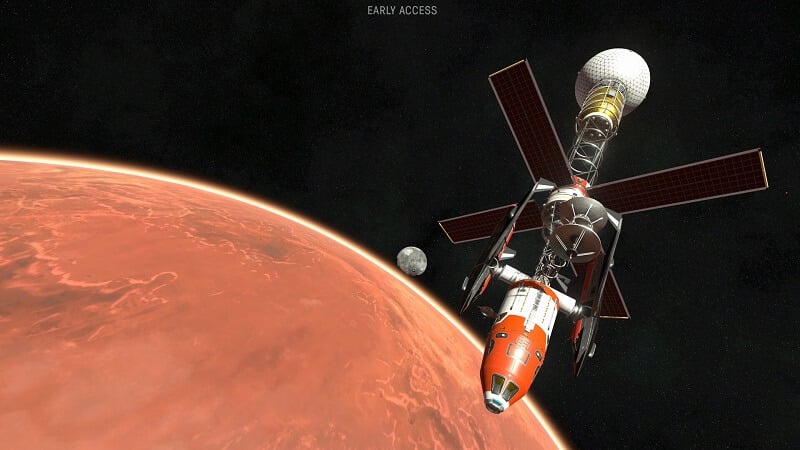 Image source: Steam
Image source: Steam
Minimum System Requirements For Kerbal Space Program 2
CPU: Intel Core i5-6400 or AMD Athlon X4 845
RAM: 12GB
Graphics: Nvidia GTX 1070 Ti or AMD RX 5600 XT
Storage: 45GB
The original Kerbal Space Program had minimum requirements of a mere Core 2 Duo CPU from 2006, and any GPU with just half a gigabyte of video memory. Considering it’s over 10 years since that game’s original public release, it’s no surprise that Kerbal Space Program 2 has much more stringent minimum system requirements, but even these aren’t too demanding.
The CPUs are closing in on seven years old and weren’t exactly high-end even at release. And the graphics cards haven’t been considered powerful for several generations. They’re no slouches, though, so you won’t be able to get this game running on your ancient homework machine, and it certainly won’t run on onboard graphics.
Most mid-range gaming PCs from the past few years shouldn’t have too much trouble with a game like this, but it will mean playing the game with most of the settings at their lowest, at 1080p resolution. With the ongoing issues with optimization, too, it’s likely that you’ll need to keep your ships small with a relatively modest number of components to keep the frame rate comfortable.
Meeting The Minimum With A Modern PC
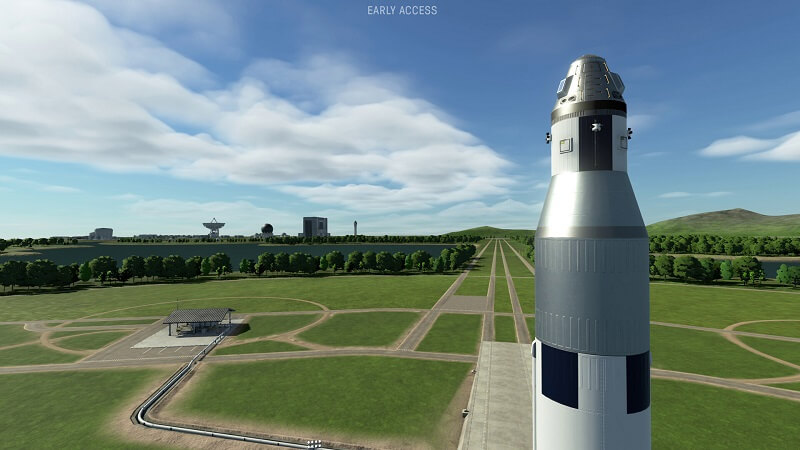 Image source: Steam
Image source: Steam
If all you need to play Kerbal Space Program at the minimum requirements is a little upgrade to your memory, then it could be worth just buying a cheap kit second-hand and enjoying the game on your existing PC. But if what you have isn’t enough to meet the graphics or processor requirements, you’re probably better off buying new.
The latest generation components are fast, efficient, and will better buffer you against frame rate drops while the game’s performance is improved.
For a new PC that can give you a comfortable KSP2 gaming experience, you’ll want a powerful entry-level CPU like the Intel Core i3-12100F. It has four cores, supports eight threads, and has a boost clock of 4.3GHz. That makes it vastly more powerful than either of the options recommended by Intercept, and yet it’s also incredibly affordable. Pair it with a cheap motherboard and 16GB of affordable DDR4 memory and you have a capable PC just waiting for a decent GPU.
You’ll have to spend a little more on the graphics card, but you needn’t break the bank. The AMD RX 6600 is a great alternative to the older GPUs in the minimum system requirements. It has the same amount of memory as the 1070 Ti, and a more powerful GPU which will deliver higher frame rates at a reasonable price. It also gives you better support for FidelityFX Super Resolution (FSR) and some very, very light support for hardware accelerated ray tracing.
You won’t have ray tracing in KSP2, but it seems likely that FSR and potentially DLSS and Intel’s XeSS will be implemented in the future, so having optimized support for that should be beneficial long term.
What PC Do We Recommend?
Equipped to handle modern PC games, the Fusion Reaver is the ideal starter PC package to get Kerbal Space Program 2 up and running.
Albeit a tad more expensive than the AMD option suggested, graphics are handled by NVIDIA’s excellent GeForce GTX 1650 graphics card. Whilst the suggested Intel Core i3-12100F CPU capably handles the game’s many layers alongside photo and video editing plus any background tasks.
It’s a PC that is ideal for enjoying both the most popular mainstream PC titles like Minecraft, League of Legends, DOTA2, Hearthstone and CS:GO, but is also capable of running more demanding games like Kerbal Space Program 2 at full HD resolution.
All of this is backed up by a superb WiFi-enabled Gigabyte motherboard, 16GB of ultra-fast DDR4 memory and a stylish M-ATX case, complete with a tempered glass side panel so you can see all the goodness inside.
It’s also been rated 5/5 stars by PC PRO Magazine and branded as ‘PC PRO Recommended’.
“This PC is a hot contender if your budget is limited”
Tim Danton, PC PRO issue 332
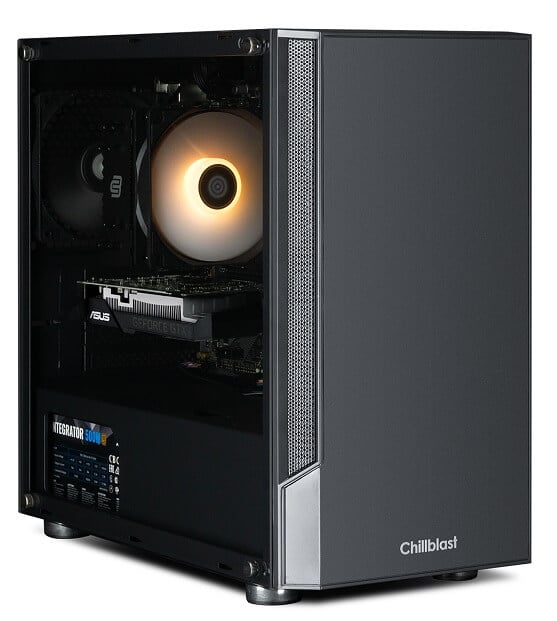
Recommended System Requirements For Kerbal Space Program 2
CPU: Intel Core i5-11500 or AMD Ryzen 5 3600
RAM: 16GB
Graphics: Nvidia RTX 3080 or AMD RX 6800 XT
Storage: 45GB
Well that was quite a leap, wasn’t it? These might be the highest “Recommended” system requirements we’ve ever seen for a game – especially one that’s not aiming for photorealism or using advanced lighting ray tracing. But that’s what KSP2 in its current form demands, so you can only guess what you’d want to try to play the game at higher settings (see below for our estimations).
For the CPUs, Intercept has still kept the suggestions relatively modest, with mid-range CPUs from three generations past. That’s somewhat surprising for this experienced KSP player, as processor performance was a major factor in handling the myriad of physics calculations in the game.
Still, these mid-range chips do rule out some older gaming systems which are still using modest CPUs, and highlights that at least the game can make use of six cores for improved performance. So, higher multi-threaded power may help this game even where it isn’t well optimized.
The real leap with the recommended system requirements, however, is with the graphics cards.
The Nvidia RTX 3080 and AMD RX 6800 XT were two of the most powerful graphics cards from the last generation and are still some of the most expensive cards you can buy. Still, they should help you play the game with most if not all of its advanced visuals tuned to their highest setting, and give you a steady frame rate even with larger space crafts.
 Image source: Steam
Image source: Steam
Meeting The Recommended System Requirements With A Modern PC
The recommended hardware for Kerbal Space Program 2 is far from irrelevant. The graphics cards in particular are still right up there as some of the most powerful GPUs you can buy today and you can still find the CPUs new. So, if you want a high-end KSP2 experience, should you just buy what’s recommended here?
Maybe not. The CPUs are indeed, still relevant, but they aren’t ideal. Knowing what we know of Kerbal Space Program performance from the original game, we can tweak this to deliver a better overall gaming experience.
If you have an existing AMD Ryzen-based PC, then the RX 5800X3D would be an affordable and excellent upgrade for a game like this – the additional cache has been shown to be particularly useful in high part-count craft. However, that doesn’t give you much of an upgrade path, so if you’re building new, one of the Ryzen 7 7700X CPUs would be an excellent alternative – or if you want that 3D VCache, wait until April and grab a 7800X3D.
Intel CPUs are still great too, though, and the Core i5-13600K is a killer gaming processor which will be able to really flex its high clock speed in a game like this. Pair either with 16GB of DDR4 or DDR5 memory, platform and preference dependent, and you’ll have the foundation of a solid KSP2 gaming PC.
As for GPUs, you can buy one of the cards recommended here, though the AMD card is typically significantly cheaper. You could bump your budget a little and get the notably more powerful RX 6950 XT, or if you can get it at a good price, the next-generation RX 7900 XT.
What PC Do We Recommend?
If you have the budget and want a gaming PC that will let you enjoy Kerbal Space Program 2 at higher resolutions like 1440p or even 4K whilst maintaining high frame rates, this is what Chillblast recommends: the Chillblast Quasar Gaming PC.
It houses a brand new 13th-generation Intel i5 CPU combined with the excellent Nvidia RTX 4070 Ti GPU, which is a slight step up from the 3080 suggested above. This card is perfect for 1440p gaming and even performs well at 4K, trading a few frames per second for enhanced graphical fidelity.
Alongside these components, the Quasar also houses a massive 1TB M.2 NVMe SSD, giving you ample room to download the game and enjoy lightning-fast load speeds.
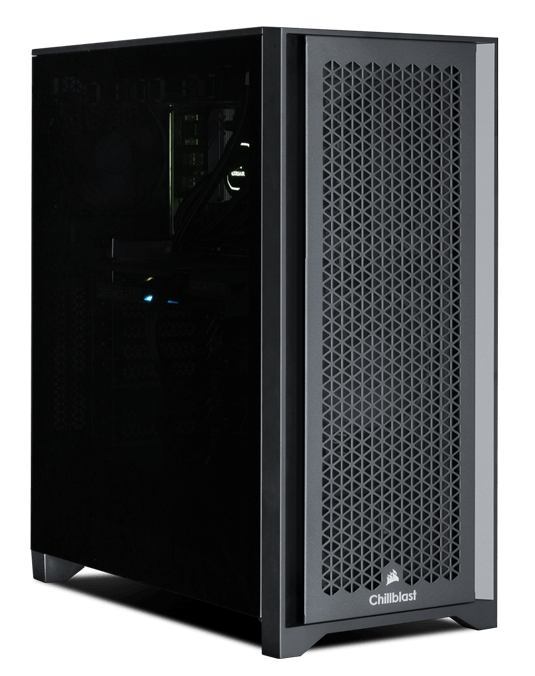
What About 1440p Or 4K?
We don’t have any official system requirements for Kerbal Space Program 2 at 1440p or 4K, but it’s clear from the Recommended System Requirements and statements from the developer, that anyone looking to run KSP2 at ultra-high resolutions is going to need a very high-end PC indeed. And even then, stable performance is far from guaranteed.
With that in mind, instead of a dedicated 1440p and 4K configuration, let’s consider the best hardware for unlocking the best possible performance out of Kerbal Space Program 2 while it continues its journey through Early Access.
 Image source: Steam
Image source: Steam
The Best CPUs for Kerbal Space Program 2
As much as Intercept doesn’t seem too concerned about CPU performance holding back its game, that was where KSP ran into the most trouble. Indeed, the new game also seems to have that same kind of bottleneck, with one of the major performance improvements Intercept is currently working on being an optimization of the way fuel transfer is handled between tanks, rocket motors, and different craft; a CPU-intensive task.
With that in mind, the latest crop of AMD X3D CPUs – the 7950X3D, the 7900X3D, and the upcoming 7800X3D – are likely to be some of the best options. The older 5800X3D showed significant performance gains in KSP over the stock 5800X, particularly in reducing stuttering and hitching when moving between craft.
Top Intel CPUs like the 13700K and 13900K are great options too, and offer greater performance outside of gaming. But they are unlikely to stand up to AMD’s new crop of cache-enhanced processors.
The Best Graphics Cards For Kerbal Space Program 2
With the already-high Recommended system requirements, and reports from Early Access gamers that they have hit sub-30 frame rates with even high-powered GPUs when working on big spaceships, the best GPU for KSP2 is going to be the best one you can afford.
If you can afford the top cards from the RTX 30-series or RX 6000-series, you’ll be able to get excellent performance if you tweak the settings and keep your expectations in check. For more grunt, the latest generations of RTX 40-series and RX 7000-series do offer a big jump in performance, but at a significant cost. Their additional GPU memory may help when working with some of the biggest rocket designs, too.
On that front, the RX 7900 XT and 7900 XTX offer the best bang for buck from the latest cards, giving close or even-better performance than the Nvidia RTX 4080 at a much lower price. The RTX 4070 Ti is worth considering if you can get it in a sale, but last-generation cards perform just as well and are often cheaper. With no DLSS 3 in KSP2, there’s less incentive to buy the weaker 40-series GPUs.
That’s not the case with the top-end, though.
There is nothing as powerful as the RTX 4090. It is close to double the cost of the AMD cards in some instances, but its performance is impossible to deny. It is the fastest graphics card the world has ever seen and by quite some margin. If you want to guarantee that your GPU is not the bottleneck in your system, the RTX 4090 is the best GPU for KSP2.
Conclusion – Watch This Space
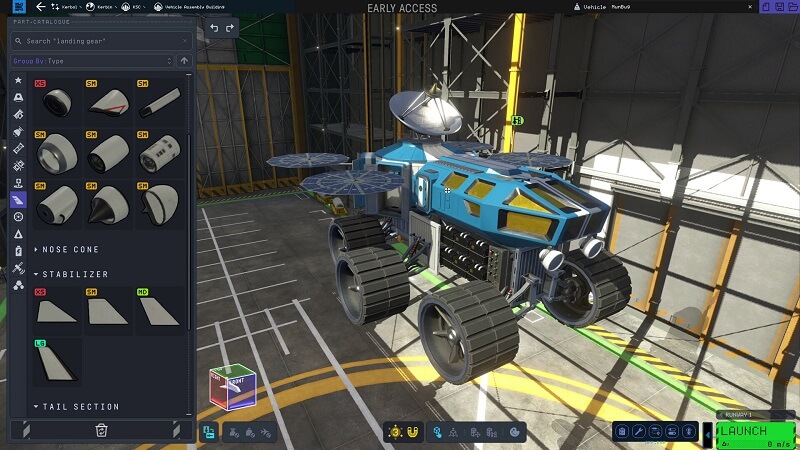 Image source: Steam
Image source: Steam
Kerbal Space Program 2 is far more demanding than the original game, but it will always be more demanding if you push the game and make monstrous rockets with lots of interlinking parts, and especially when you blow it all up. The game is currently in a functioning state, but it’s only just about stable and there is a lot of work to do in optimization to make it far more playable.
You don’t need a monster of a PC to play KSP2, but for now, it’s the best way to get around its poor optimization. That will change over the coming year(s) though, so watch this space if you can’t quite afford the PC you need. Kerbal Space Program 2 will get much easier to run in due course.






